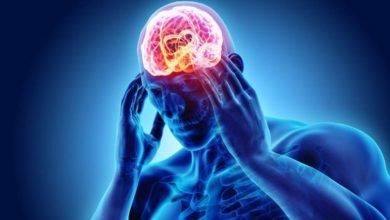What is Norepinephrine Hormone? Formation and Effects

Stress reactions always occur as an interaction between the nervous system, the hormonal system, and the immune system. Along with CRH (corticotropin-releasing hormone), norepinephrine interactively controls the reaction chain of stress hormones and neuronal messenger substances (neurotransmitters).
But if the pressures prevail, the chain of reaction becomes unbalanced. An excess of norepinephrine is encountered in all stress-related health disorders, often in parallel with serotonin deficiency. The effects of excess or deficiency of norepinephrine that occur later have various consequences for the organism.
Definition of Norepinephrine
Norepinephrine (noradrenaline) is both a hormone and a neurotransmitter and belongs to the group of catecholamines. These are substances released in stress reactions. They also contain the hormones adrenaline and dopamine. As a hormone, norepinephrine triggers increased adrenaline release. It acts as a so-called “stress hormone”.
Norepinephrine is an important hormone in the human organism, that is, a biochemical messenger substance that has a regulatory or stimulating effect on certain organs. Being a part of the autonomic nervous system, it is involved in many vital functions such as blood pressure, respiration and metabolism.
Norepinephrine is assigned to the class of substances of catecholamines. This class of amino acid derivatives consists of the amino acids tyrosine and phenylalanine. Other important hormones in this class of substances are adrenaline and dopamine.
Dopamine is the precursor to noradrenaline. Noradrenaline differs from adrenaline only in the absence of a methyl group on the amino group. Therefore, norepinephrine is also called demethylated adrenaline.
How Is Norepinephrine Formed?
Norepinephrine is a hormone produced in the adrenal medulla. In contrast, the neurotransmitter noradrenaline is produced directly in the so-called sympathetic nervous system part of the autonomic nervous system. There are noradrenogenic neurons and chromaffin cells whose function is the synthesis of norepinephrine.
In a neurotransmitter function, norepinephrine is primarily released from certain neurons. These nerve cells are found in certain areas of the brain, such as the locus caeruleus, as well as the sympathetic nervous system. The precursors of norepinephrine are the amino acids tyrosine and phenylalanine.
Norepinephrine synthesis requires vitamin C, vitamin B6, magnesium and copper, which act as electron donors and cofactors, among other things. The precursor to norepinephrine is dopamine. This is oxidized by the enzyme dopamine-beta-hydroxylase, meaning it releases an electron, resulting in norepinephrine.
What Does Norepinephrine Do?
The hormone norepinephrine (noradrenaline) belongs to the sympathetic nervous system, which is part of the autonomic nervous system. The main function of the sympathetic nervous system is to increase the performance of the organism in case of danger, effort or stress.
Except in dangerous situations, norepinephrine has an important function in increasing alertness, motivation, and mental performance. The mode of action of the sympathetic nervous system is also called ergotropic. This means that the outward influence of the body is increased. The sudden release of norepinephrine into the blood stimulates the fight-or-flight response.
This process stimulates alpha-1 receptors and beta-1 receptors in the heart muscle, causing a rapid rise in blood pressure and hormone concentration in the blood. Following its nature as a neurotransmitter, norepinephrine activates certain receptors called adrenoceptors. These are found in arterioles. They are small arteries that become capillaries and narrow with this activation.
As a result, more blood is supplied to the muscles, thereby increasing reaction speed and performance. Due to its blood pressure-raising effect, adrenaline is used as an emergency drug in the treatment of trauma and shock. Its constricting effect on veins and capillaries is also used medicinally. For example, norepinephrine is mixed with local anesthetics to minimize bleeding and prevent the drug from entering the bloodstream.
Consequences of Norepinephrine Excess and Deficiency
Continuous exposure to stress can lead to abnormally high norepinephrine release. One of the side effects caused by norepinephrine may be suppression of the immune system. If the level rises permanently, inflammation may be promoted as the immune system is weakened.
However, prolonged excessive production of norepinephrine is not sustainable for the organism. Therefore, a norepinephrine deficiency may eventually occur as a response to overproduction. This is considered a common cause of depression. Hence, norepinephrine is found as a component of many antidepressants.
Other possible side effects of increased norepinephrine production can be organ damage and necrosis. This is because the narrowing of the arterioles reduces the blood flow to the organs. Therefore, their increased concentration can also lead to heart failure.
A pathologically high level of norepinephrine in the blood may be an indicator of various tumors of the adrenal glands or the brain. When determining the concentration in the blood, it is important to insert the cannula at least thirty minutes before blood is drawn. This is because the insertion itself raises the level of norepinephrine.
On the other hand, apart from depression, a very low concentration of norepinephrine is encountered, especially in adrenal gland diseases.





